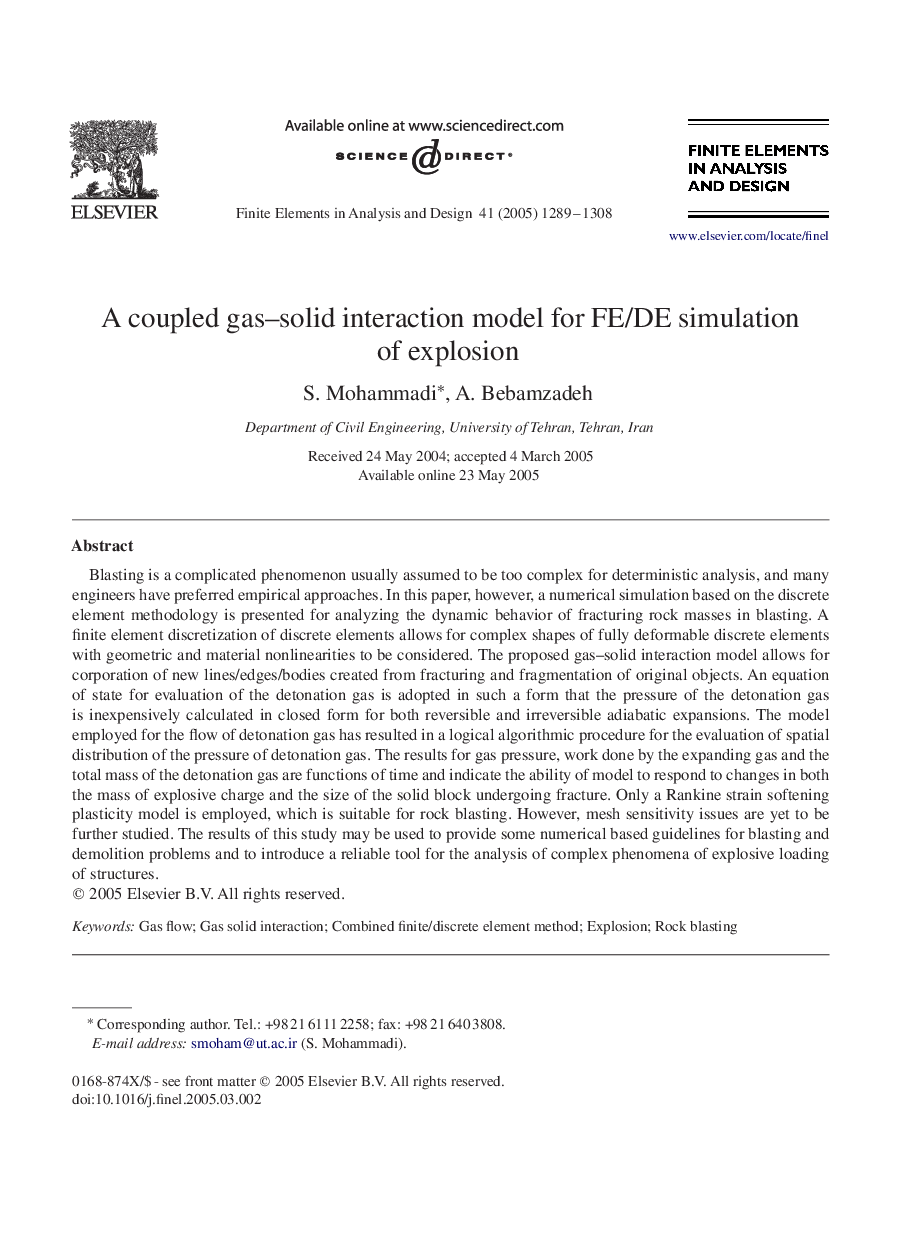| Article ID | Journal | Published Year | Pages | File Type |
|---|---|---|---|---|
| 10354795 | Finite Elements in Analysis and Design | 2005 | 20 Pages |
Abstract
Blasting is a complicated phenomenon usually assumed to be too complex for deterministic analysis, and many engineers have preferred empirical approaches. In this paper, however, a numerical simulation based on the discrete element methodology is presented for analyzing the dynamic behavior of fracturing rock masses in blasting. A finite element discretization of discrete elements allows for complex shapes of fully deformable discrete elements with geometric and material nonlinearities to be considered. The proposed gas-solid interaction model allows for corporation of new lines/edges/bodies created from fracturing and fragmentation of original objects. An equation of state for evaluation of the detonation gas is adopted in such a form that the pressure of the detonation gas is inexpensively calculated in closed form for both reversible and irreversible adiabatic expansions. The model employed for the flow of detonation gas has resulted in a logical algorithmic procedure for the evaluation of spatial distribution of the pressure of detonation gas. The results for gas pressure, work done by the expanding gas and the total mass of the detonation gas are functions of time and indicate the ability of model to respond to changes in both the mass of explosive charge and the size of the solid block undergoing fracture. Only a Rankine strain softening plasticity model is employed, which is suitable for rock blasting. However, mesh sensitivity issues are yet to be further studied. The results of this study may be used to provide some numerical based guidelines for blasting and demolition problems and to introduce a reliable tool for the analysis of complex phenomena of explosive loading of structures.
Keywords
Related Topics
Physical Sciences and Engineering
Computer Science
Computer Science Applications
Authors
S. Mohammadi, A. Bebamzadeh,
